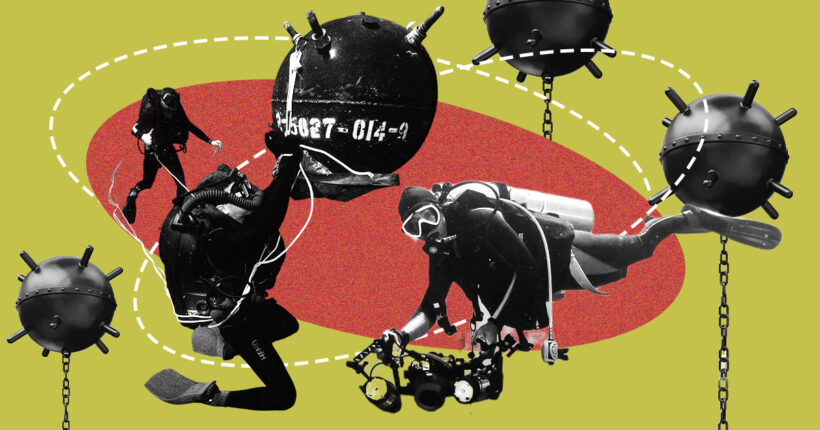
"I can't imagine life without the sea"
Fifty-year-old native of Odesa Oleksandr Yakovtsev hasn't missed a summer swim since the invasion began. He regularly visits the coast for over two years, even where warning signs prohibit entry. He admits he's well aware of the danger of the mine and keeps up with the news, but he can't deny himself the pleasure of diving into the water during the summer heat. For him, the sea is an inseparable part of life, bringing him peace and helping him maintain his health.
"Since childhood, I've spent every summer at the beach and can't imagine breaking that tradition," Oleksandr confesses. "While I sunbathe, the sun heats me up so much that the sea helps me cool down. I'm not afraid of anything. I'm from Odesa, and the sea gives me strength. When I go into the water, I never think that I could lose my life. Maybe that's what saves me."
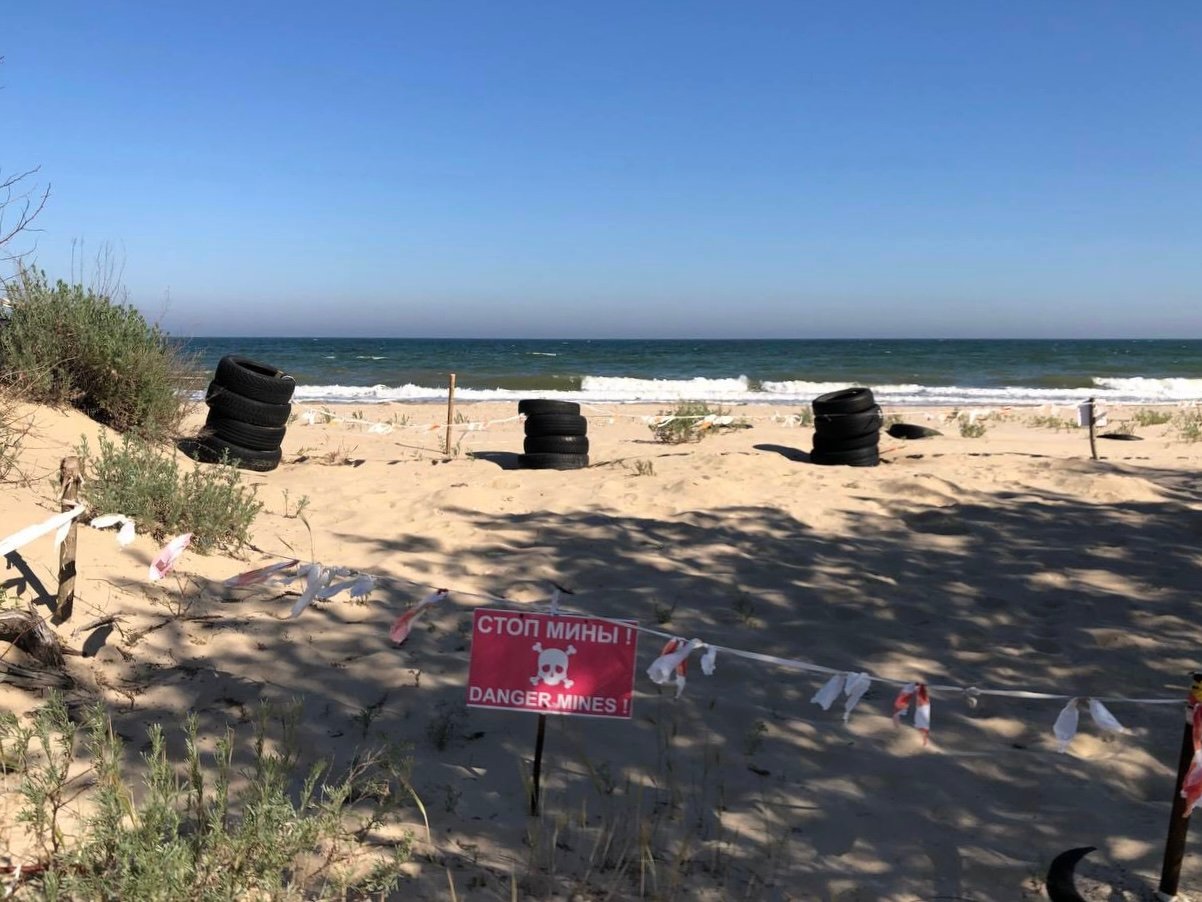
Mine danger warning. Photo: Rubryka
Each of Oleksandr's beach outings ends well, but his story is a fortunate exception to the rule. There are about a dozen daredevils like him on the beaches of Odesa. They all unanimously say, "We're not afraid. Look, we're here, and people are relaxing nearby, so everything is fine. If a mine explodes, it's fate."
However, whether to expose oneself and loved ones to danger is a matter of choice, not fate.
"All mined areas of the Odesa coast are marked with appropriate signs. Unfortunately, people ignore these warnings and perish. Some think that moving a few meters aside changes the situation," says Ukrainian Sappers Association safety expert Ihor Reznichenko. "They must understand: if there's a warning sign, it shouldn't be ignored — even if it's a few meters away from where the vacationer decides to swim. Their decision by no means implies that the zone they've chosen is safe. It's impossible to place a warning sign right next to every approximate mine location." Mr. Reznichenko stresses that warning signs are placed on coastal areas, marking the dangerous zone, not the exact mine placement.
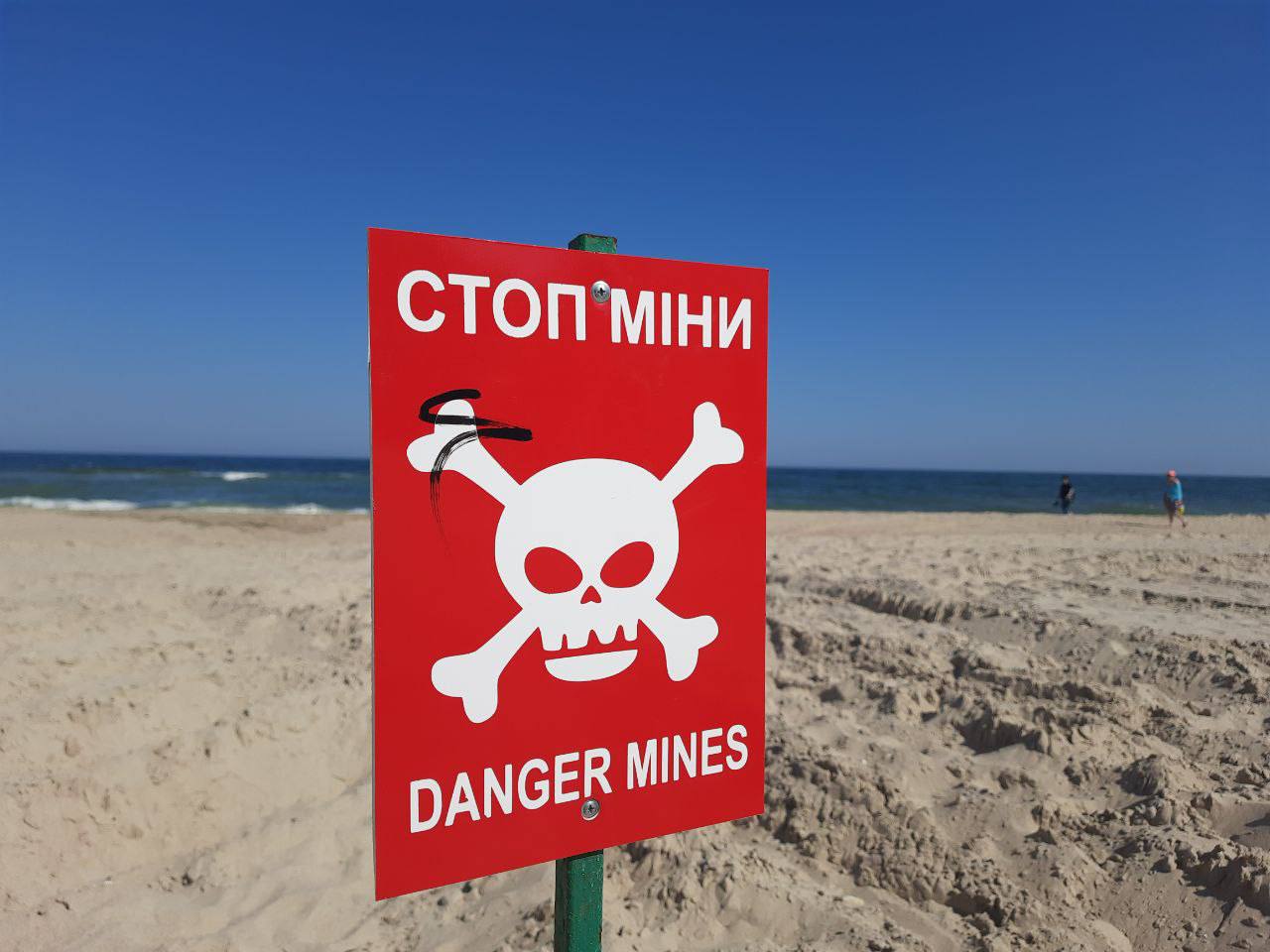
Sign "Stop Mines" at one of the beaches in the Odesa region. Photo: Rubryka
Is it really so dangerous?
The first dangerous findings were discovered in the Odesa region in spring 2022. While the military and the State Emergency Service destroyed some sea mines adhering to safety standards, others detonated uncontrollably, damaging coastal buildings. In 2023, for example, a mine explosion damaged 27 residential buildings in the territory of the Fontanka village council.
Despite informing people about safety measures and risks near the sea, local authorities could not stop those eager to sunbathe and swim. Moreover, some warning signs were "taken as souvenirs" or altered to give permission to swim. Without fully understanding the seriousness of the mine threat, people knowingly took risks that didn't end well for everyone.
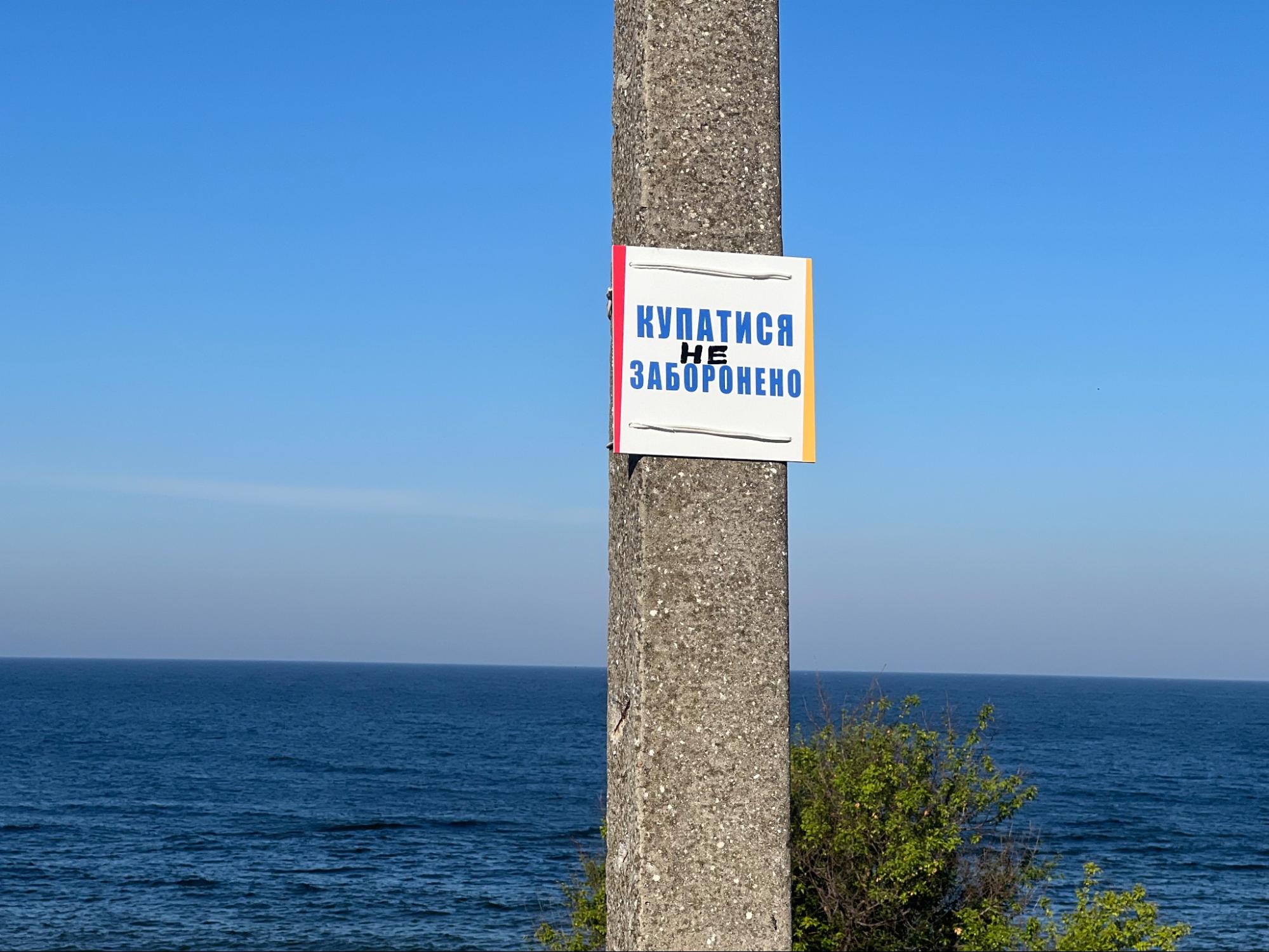
Warning sign on the Sobachyi beach in Odesa with the inscription "Swimming prohibited," on which people added the not. Photo: Rubryka
The first tragic incident was in March 2022 when two people ignored warning signs about the danger, and their vehicle exploded as they approached the coastal zone. In June of the same year, a man in the village of Hrybivka died from an explosion during a swim in front of his wife, son, and friend. The following month, one vacationer in the resort village of Karolino-Buhaz encountered an explosive during a swim in the sea and died, while another man suffered a concussion. A few days later, another man was decapitated while swimming by a blast.
After numerous incidents of mine discoveries and deaths from July 16, 2022, the head of the Odesa Regional State Administration, together with the commander of local military base A2393, issued a decree banning people from beach areas. However, it did not deter vacationers, and in August, three men died in the town of Zatoka due to an explosion in the water, while two others were injured.
Is there a safe solution?
In the first year of the full-scale war, police tried dealing with vacationers, but constant patrolling along the coastline proved impossible. People would dive back into the water as soon as police officers left the beach. In May 2023, local authorities began developing procedures for opening safe zones near the sea to mitigate the issue.
Military leadership provided local authorities with recommendations to ensure beach safety despite the pollution in the Black Sea from the destruction of the Kakhovka Hydroelectric Power Plant and its dam upstream of the Dnipro River and coastal shelling. On August 12 last year, bathing was officially allowed at six beaches in Odesa:
- Kaleton Beach;
- Inclusive Beach;
- Municipal Beach (Fontana 14 area);
- Ikra Beach;
- Chaika Beach;
- Municipal Beach (Fontana 10 area).
However, the region did not officially start the resort season. The decision to open beaches was explained by the need to create safe areas for relaxation and the recuperation of people, military personnel, and their families.
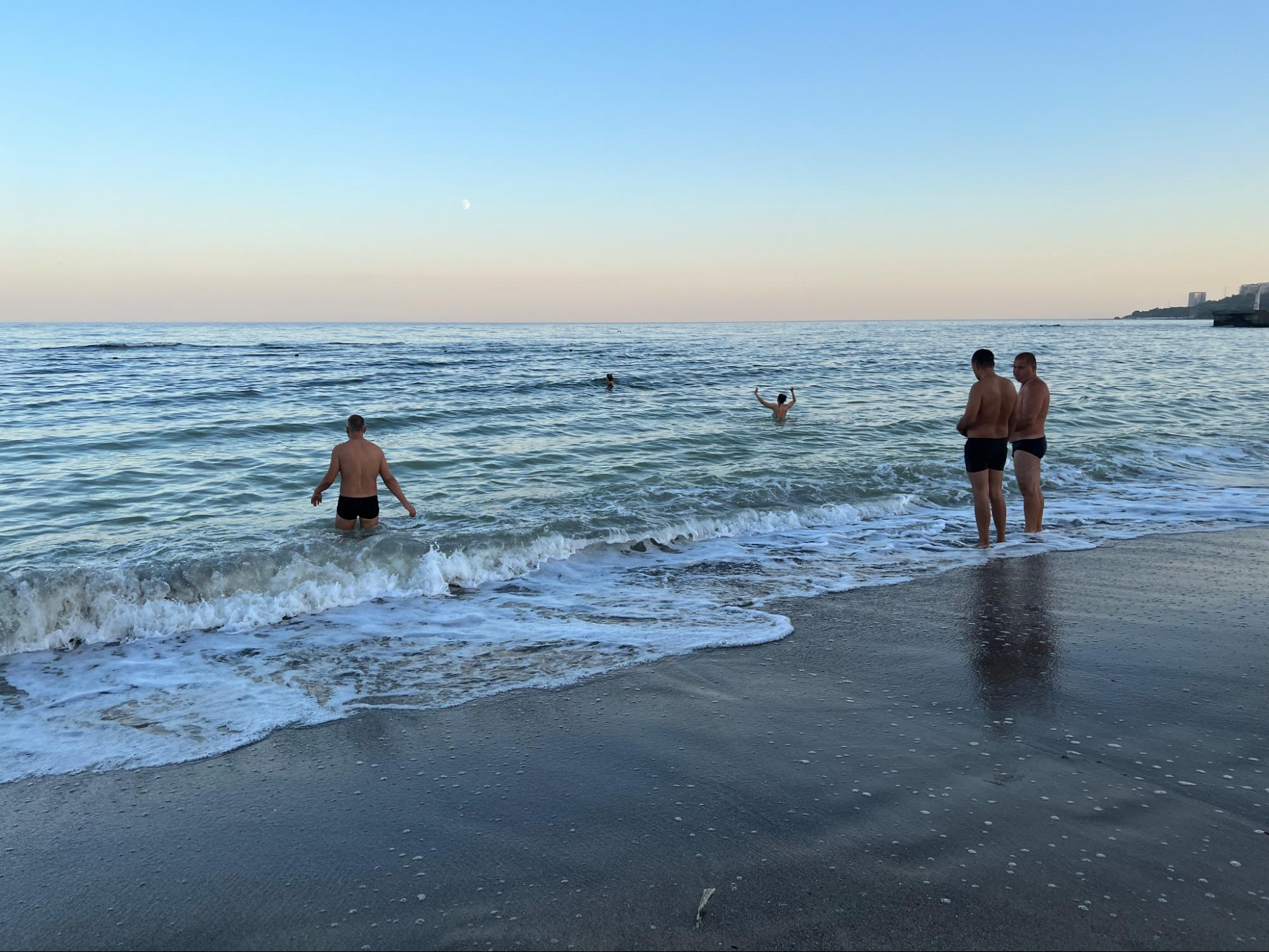
Vacationers on one of Odesa's beaches. Photo: Rubryka
Since only six safe beaches were opened, finding a free space on them was even more of a challenge. Because of this, many still went to the "prohibited" ones, where the risk of encountering a mine was much higher.
"You can't imagine the number of people who came to these (safe beaches — ed.). Weekends were especially crowded," says Odesa resident Oleksandr Yakovtsev. "I tried to go to one of these beaches, but seeing how packed it was, I just went to a nearby 'dangerous' one. I had much more space around me there, both on the sand and in the water. How can you relax when it's so crowded?"
Even though the weather was warm as early as May, the first and, so far, only Kaleton Beach officially opened on June 8. The local administration plans to gradually expand the list of safe seaside areas to 20, three times more than last year. Most will be in Odesa, with the rest in the region's Odesa and Izmail districts.
"People can't be stopped. They want to relax and recuperate. Our natural vitamins, sun, Black Sea, and beaches can't be replaced by any vitamins we offer. That's why we try to open as many public beaches as possible," Oleh Kiper, head of the Odesa Regional State Administration, said at a briefing.
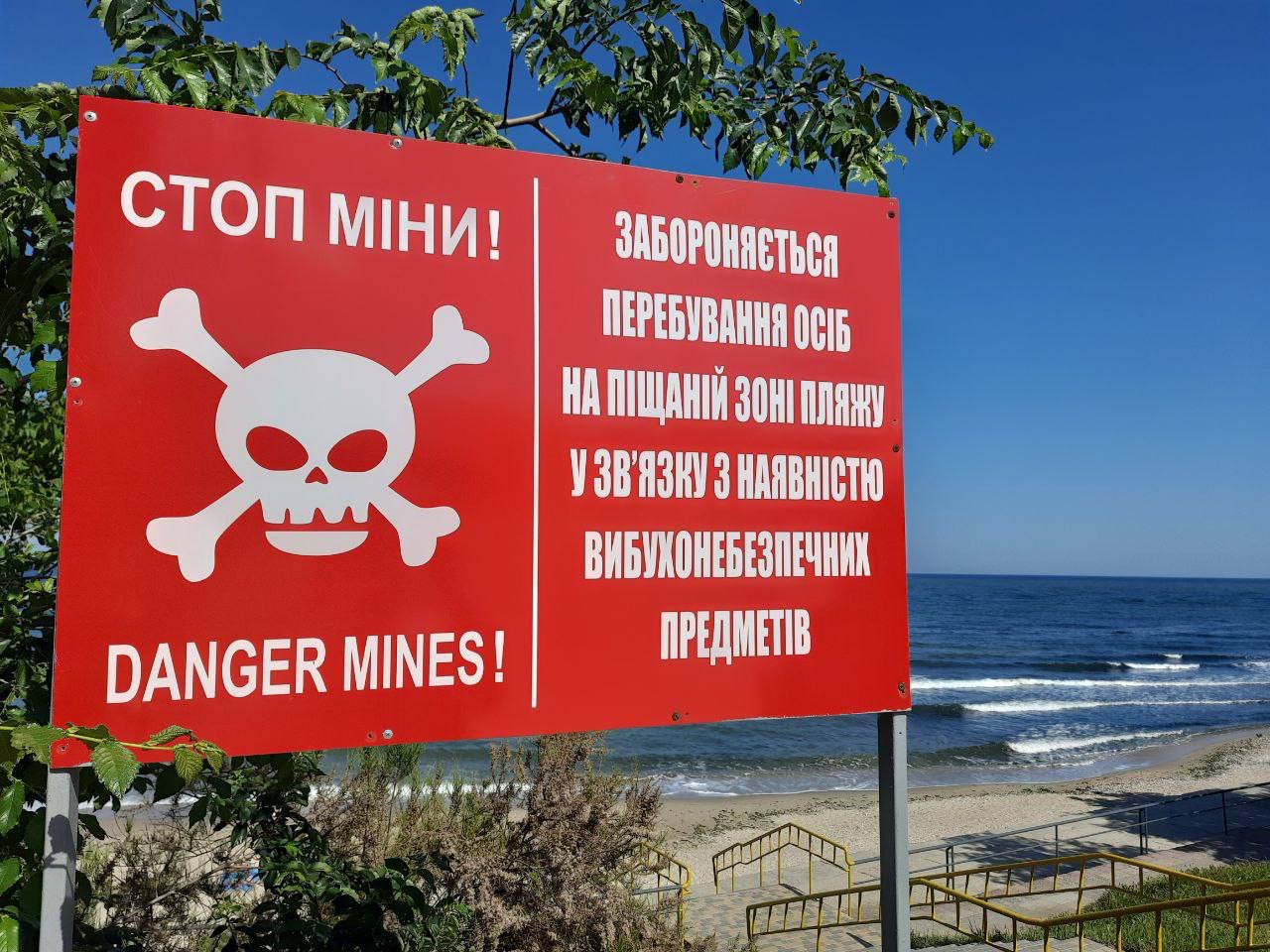
Mine danger warning sign. Photo: Rubryka
How to check if a beach is safe?
Before opening safe beach zones, special services, including military personnel and divers, inspect them for explosive devices. In addition to the commission's findings, this area should have a limited buoyed swimming area, a surveillance and rescue post, loudspeakers for air alarm warnings, and nearby bomb shelters.
If the beach meets these conditions, it will be considered safe. Vacationers must follow specific rules, such as not staying there during air alarms and storms with winds of two points or more.
"There are currently two types of mines in the Black Sea — anti-landing and anchor mines. Both aim to prevent enemy ships and boats from reaching the coast," says security expert Ihor Reznichenko. "The first type is placed at a depth of two meters and has a rod that explodes when tilted 10 degrees. Anchor mines are set at a depth of 10-15 meters, so people are unlikely to encounter them because they swim over them. However, these mines can break loose during storms and drift to shore. Due to their buoyancy, they can be seen on the water's surface. Both types are equally dangerous, with strong explosive effects that cause a powerful underwater shock wave. Imagine how they would affect a person if they can stop a ship."
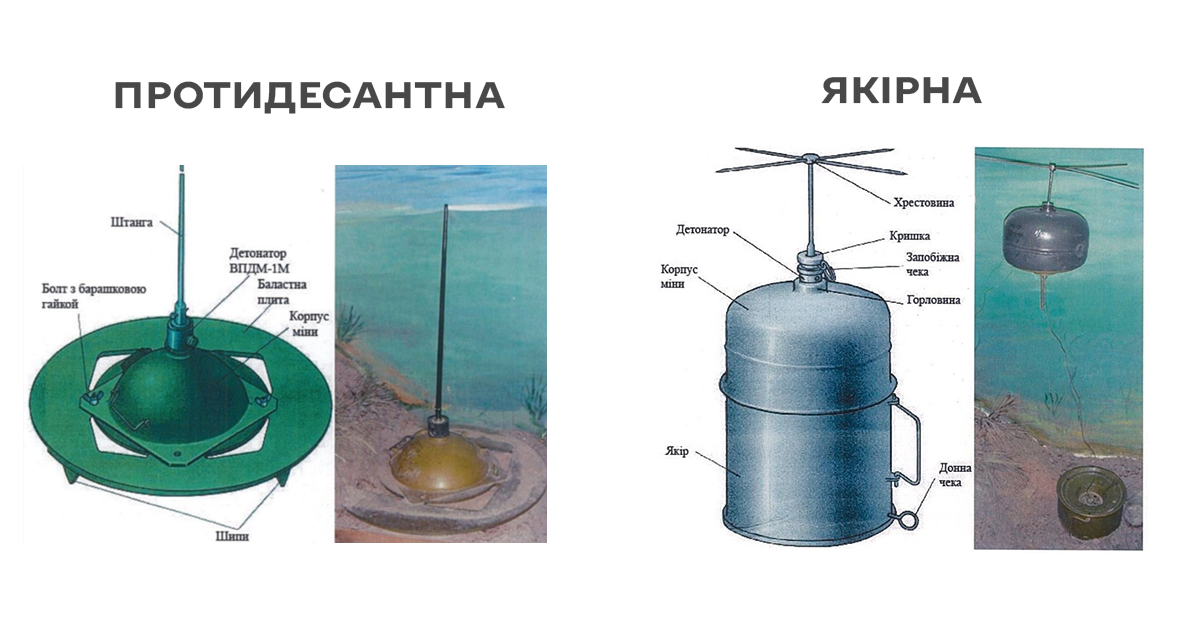
Anti-landing mine (to the right) and anchor mine (to the left). Types of naval mines. Infographic: Rubryka
The security expert adds that swimming in the sea is possible despite the mines, but only at designated beaches. Observation points with rescuers can help prevent explosive objects from approaching the coast, significantly increasing safety. However, it's important to remember that currents and waves can move mines even past barriers during storms. Collisions with rocks and the seabed can also cause them to explode uncontrollably.
How can you relax by the Ukrainian sea without risk?
Expert Ihor Reznichenko offers three important tips:
- Choose safe areas designated by local authorities. Information about these beaches can be found on the Telegram channel of Oleh Kiper, head of the Odesa Regional State Administration.
- Pay attention to warning signs that say "Danger Mines." If you see such a sign on the coast, it means mines can be anywhere in the water.
- If you notice an object in the water that looks like a mine, leave the area immediately and call 101 or 102.
"Also, if an air raid warning sounds, don't ignore it. Russian ballistic missile strikes on Odesa can arrive from Crimea in just a few minutes. React and take cover quickly. By following these simple rules, your vacation can end happily," says Mr. Reznichenko.
Otherwise, ignoring these rules, swimming in the Black Sea, and getting a "vitamin boost" can quickly turn into injury or death.






